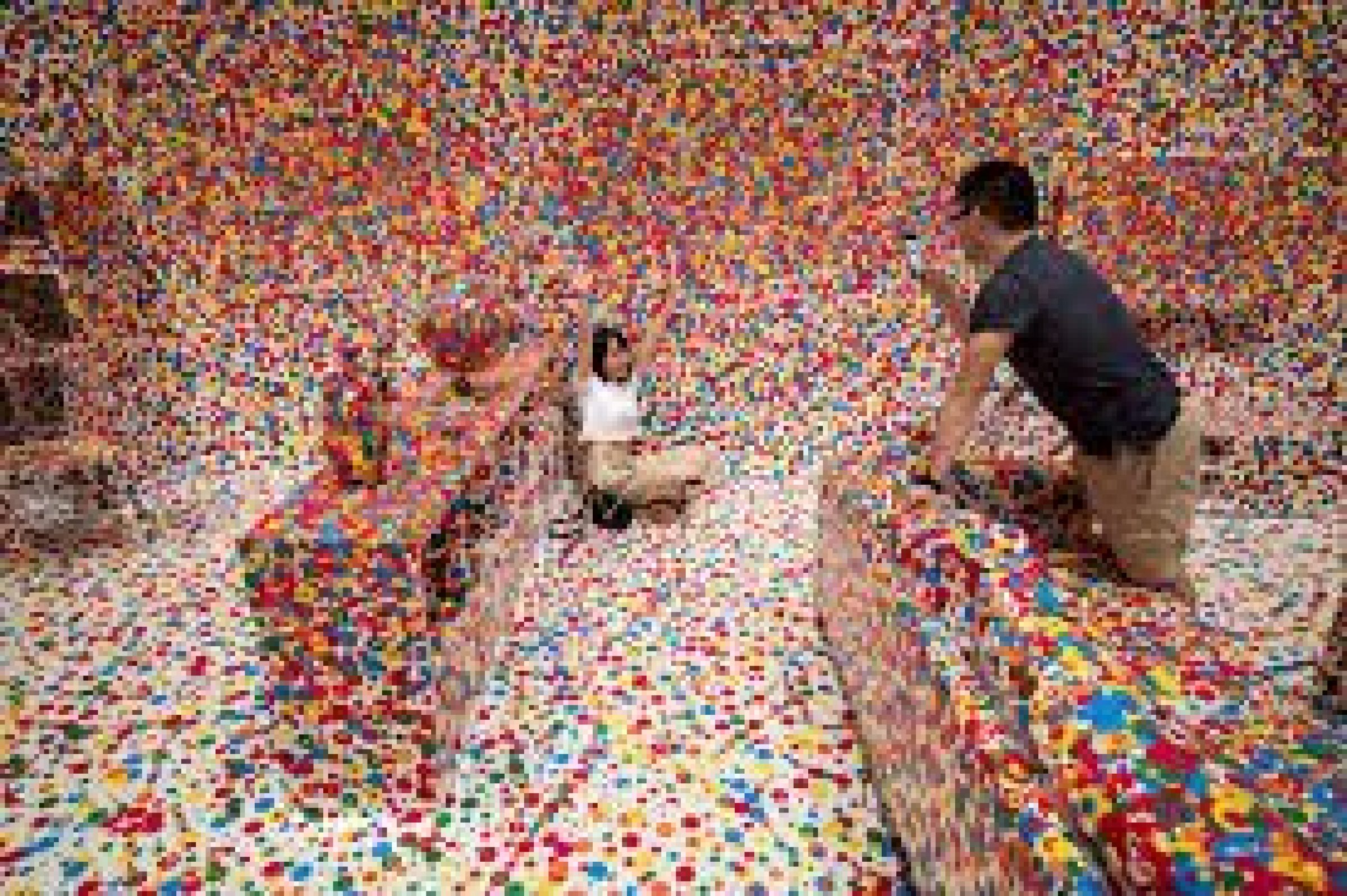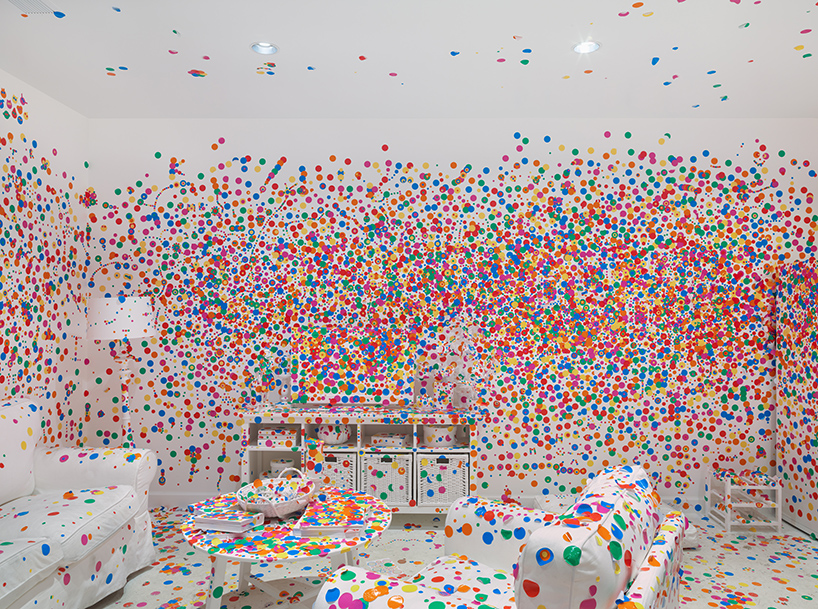
Nagano, Japan) is one of the world’s most influential artists. Kusama invites you to join in and have fun covering all the furniture and walls in this living room with bright colourful dots! The Artist: Yayoi Kusama Kusama calls this process “obliteration,†which means the complete destruction of every trace of something. For 40 years she has made paintings, sculptures and photographs using dots to cover surfaces and fill rooms. They covered everything she saw—the walls, ceilings, and even her own body. When Yayoi Kusama was a small girl, she started seeing the world through a screen of tiny dots. Alternatively, make a $2 donation at The Obliteration Room for a sheet of stickers. Stickers are included in the Children’s Biennale Art Pack, which can be purchased for $5 from the ticketing counters at Level B1. Location: Concourse Gallery 2, Level B1, Supreme Court Wing Note: An admission ticket is required to view this installation. The infinity rooms are limited to only one or two people at once, so visitors spend the rest of their time in the exhibit exploring those soft sculptures as well as early works on paper, intricate paintings.Get involved in an artwork created by world renowned artist Yayoi Kusama! Stick colourful stickers all over the furniture and walls of this white room, and watch as the space magically transforms. Yayoi Kusama, Infinity Mirrored Room – Love Forever (1966/94)

The grand finale is The Obliteration Room (2002), an all white space that visitors are invited to cover with colored polka dot stickers, transforming it over the course of the show’s run. Stepping into one of her rooms, the viewer is meant to contemplate their own insignificance in the face of infinitude. Yayoi Kusama, Aftermath of Obliteration of Eternity (2009)Ī master of painting, performance art, sculpture and installation, Kusama has dedicated herself to her work with a rare intensity since the 1950s, driven by the desire to translate her hallucinatory visions into art. “All my works in pastels are the products of obsessional neurosis and are therefore inextricably connected to my disease,” she told BOMB in a 1999 interview. Kusama’s work is often described with adjectives like “mind-bending,” and for good reason - her art is inspired by her mental illness. Her first room, Phalli’s Field (1965), filled with stuffed, tentacle-like white sculptures decorated with red polka dots, is part of the current exhibition. Yayoi Kusama, Infinity Mirror Room-Phalli’s Field (1965)Īlthough the works seem tailor-made for the age of social media, Kusama first introduced the work back in the 1960s. For Kusama, the infinite fields of light meant the dematerialization of the body becoming one with the universe for most ticketholders, however, it’s an awesome selfie.

In addition to viewing Kusama’s paintings and personal ephemera, each ticket guarantees a coveted 30-second slot inside each of the six “infinity rooms” - mirrored chambers in which sparkling LED lights or floating orbs form an immersive, kaleidoscopic abyss. Yayoi Kusama, Dots Obsession – Love Transformed Into Dots (2007) The show opened to the public on October 21 and is the first US museum exhibit dedicated to the insanely popular installations.

The museum sold out all 50,000 tickets in the first hour, and each morning, a queue forms outside for the opportunity to pay $30 for a standby ticket at the door. The hottest ticket in Los Angeles is the Broad’s "Yayoi Kusama: Infinity Mirrors," a survey of the 88-year-old Japanese artist’s five-decade body of work.

Yayoi Kusama, The Obliteration Room (2002) “Our earth is only one polka dot among a million stars in the cosmos” - Yayoi Kusama


 0 kommentar(er)
0 kommentar(er)
